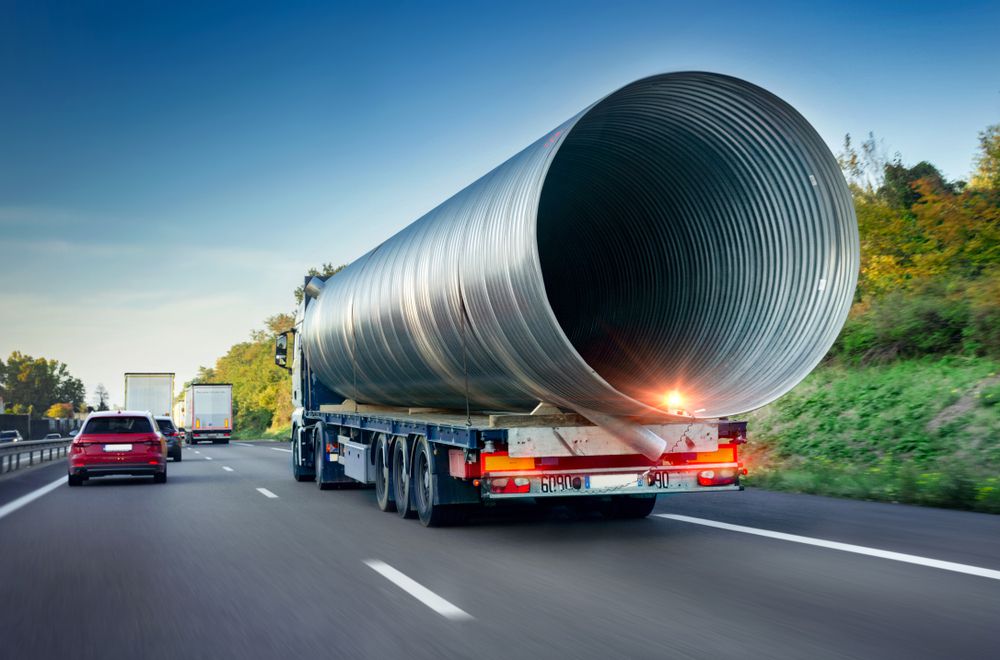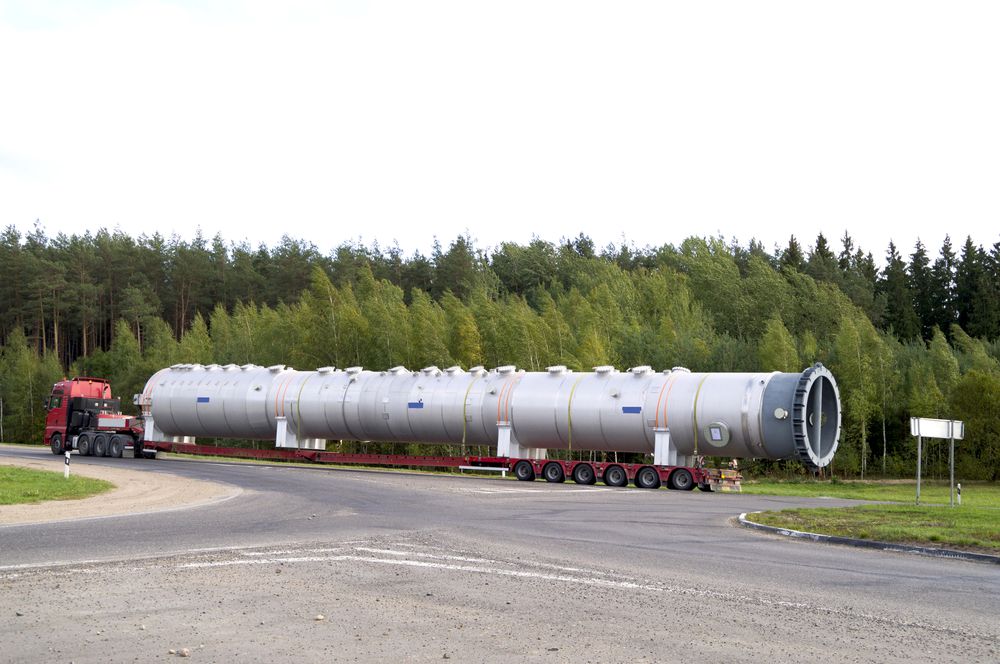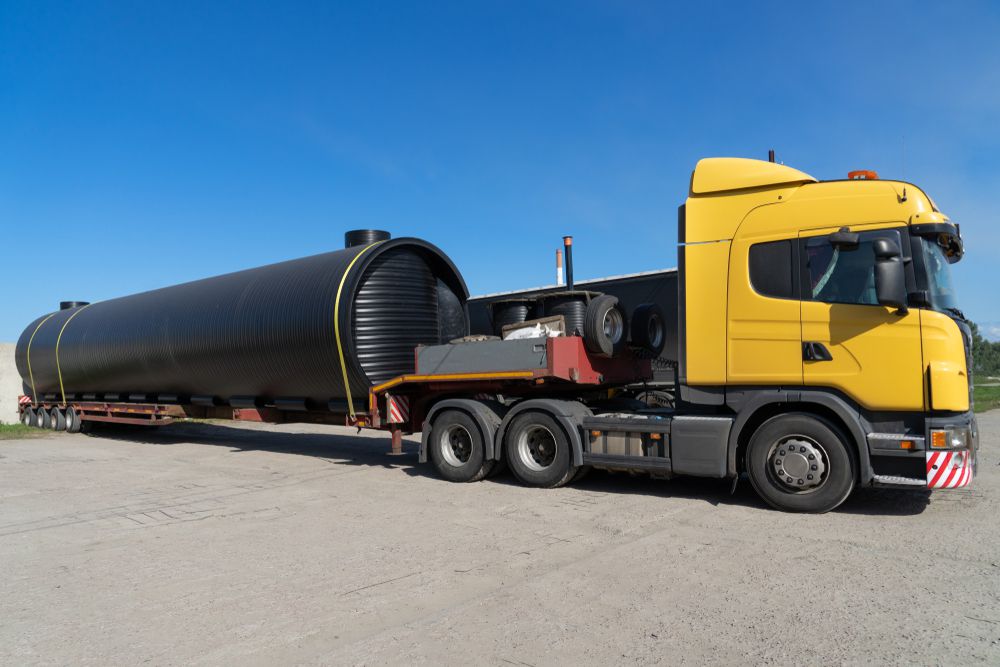How to Secure Transport of Oversized Cargo?
Transporting heavy or oversized cargo is probably one of the most challenging and complex concepts in logistics. Shipping oversized cargo needs to be handled by specialized oversized cargo shipping companies. Each heavy load and item is different and presents unique challenges.
Thus, the safety and workflow in the loading and unloading process of heavy cargo are crucial. Oversized cargo that is not handled and appropriately secured can cause severe accidents or environmental hazards. It can also lead to the loss of lives, the loss of cargo and vehicles.
Moreover, most heavy-lift items are sophisticated and expensive, which means you can’t just go to the warehouse and replace it with another. Besides, heavy lift and oversized cargo are often customized orders that take months, sometimes even years, to make and produce. If the cargo is damaged it will cause serious problems for all the parties involved in the business. Thus, teamwork and enough knowledge on how to handle it are necessary.
In this blog, we will show you how to handle the freight delivery of oversized items. There’s no reason to suffer loss or damage to oversized items. Keep reading to learn more!
How To Tell If Your Cargo is Oversized?
Generally, oversized or heavy-lift cargo has a different definition based on the shipping method you are using. When it comes to over-the-road trucking, oversized goods are defined as any load whose dimensions exceed 8.5 ft in width and 13.5-14.5 ft. However, when it comes to ocean freight transportation, any cargo that does not fit in one 40’ or 45’ container/storage is considered oversized cargo.
How to Transport Oversized Cargo?

If it will be carried on the road, special trucks or trailers with extra-large loading areas are often used. For air freight, there are large-volume aircrafts that usually carry up to 250 tons of freight.
If it is carried by sea, there are heavy-lift ships built to carry excessively large cargo loads if the cargo is too heavy or large to be quickly shipped on a conventional vessel. There are two types: semi-submerging ships and vessels. Semi-submerging ships can lift another ship out of the water and transport it. On the other hand, vessels are used with unloading facilities at inadequately equipped ports.
Shipping oversized cargo is a time-consuming and complicated process that requires more time and preparation before implementing the carriage of cargo. It’s not unusual that oversized and heavy-lift cargo requires the use of a few different modes of transportation before reaching its destination.
Tips for Transporting Oversized Cargo and Heavy-lift Cargo
Here’s the first tip for the freight delivery of oversized cargo. Transporting oversized or bulky cargo often goes beyond size, weight, or dimensions. Most of the time, it requires special equipment to handle its loading and unloading process.
Usually, heavy cargo is industrial goods like bulky cars, airplanes, mining products, and various small steel parts. Also, there are special rules for most oversized freight, so you need to get a special permit for transportation.
Oversized Cargo Measurement and Preparation

Since the major concern with oversized or bulky cargo is their size and weight, it is essential to measure its size and weight accurately. Depending on these size and weight measurements, the shipping company will need to acquire special permission for a particular type and size of shipments. Therefore, it is extremely crucial to provide accurate measurements.
Otherwise, you may encounter interruptions in delivery or worse incur additional charges. In Canada and the U.S the rules for heavy-lift cargo are much more strict than for regular cargo. Apart from the dimensions, it is also essential to know what equipment and tools you need to safely transport the cargo.
Obtain Permits and Understand the Standards of Oversized Cargo
One of the main factors that you need to consider when transporting heavy cargo is to obtain special permits. The challenging part of this is, in each country, there are different rules and regulations that you need to comply with before transporting bulky cargo. Therefore, different permissions and permits are required.
Aside from the size guidelines, there are also restrictions on when and how drivers can ship oversized cargo. For example, in most cities, for security reasons, you can only carry heavy loads during the day. Other countries have rules that may prohibit traffic on certain roads or even at certain hours of the day. Not complying with the regulations or having wrong permits can cost you a lot of time and money.
Trusted Transport Partner Company
One of the most essential steps in handling heavy cargo transportation is a partnership with an experienced and trusted transport company partner. Ideally, an experienced logistics partner understands the specific rules and regulations of different countries and is able to handle such a complex shipping operation properly. When it comes to oversized cargo, safety is the main task, and it can only be ensured with a well-honed strategy and accurate execution.
Several Carriers that Ship Oversized Cargo
As part of our list of tips for transporting oversized cargo, here are the top loading options for this kind of shipment.
Roll-On/Roll-Off Carriers
ROll-on and roll-off carriers are the best options when it comes to transporting large cargo. The below deck warehouse featured on the ‘roll-on/roll-off’ carriers is popular among shipping vehicles such as back and front loaders, dump trucks, buses, motorhomes, and other similar large vehicles. The main reason is this option offers easy loading access, unlike other shipping options.

Flat Rack
The flat rack is another equipment that logistics companies use to load oversized shipments onto a vessel. It is a flat surface without any walls or roof, which provides enough flexibility to move goods that have a width or height that extends beyond the conventional container capacities. These flat racks can also be driven directly into the hull of the vessel.
Load-on Lift-off (LOLO)
Not all heavy-lift and oversized cargo are transported using roll-on/roll-off vessels. Some cargo are too large to fit on these. Also, the cost of accommodating these items are just too high. Usually, load that is too large for even the roll-on/roll-off vessels can be shipped using the LOLO method.
Bottomline
Transportation of heavy or oversized cargo is a complex process that requires a comprehensive plan and preparation. Since this is a specialized industry, oversized cargo transportation implies cooperation with a trusted transport company.
All Freight Shipping provides oversized shipping services that make a complicated process five times simpler. You may contact us at 647-691-5535 or email us at info@allfreightshipping.com.

